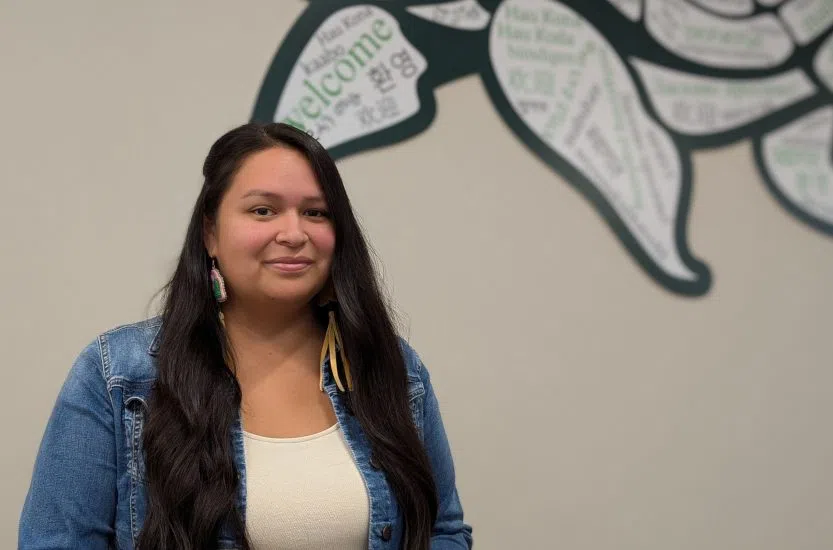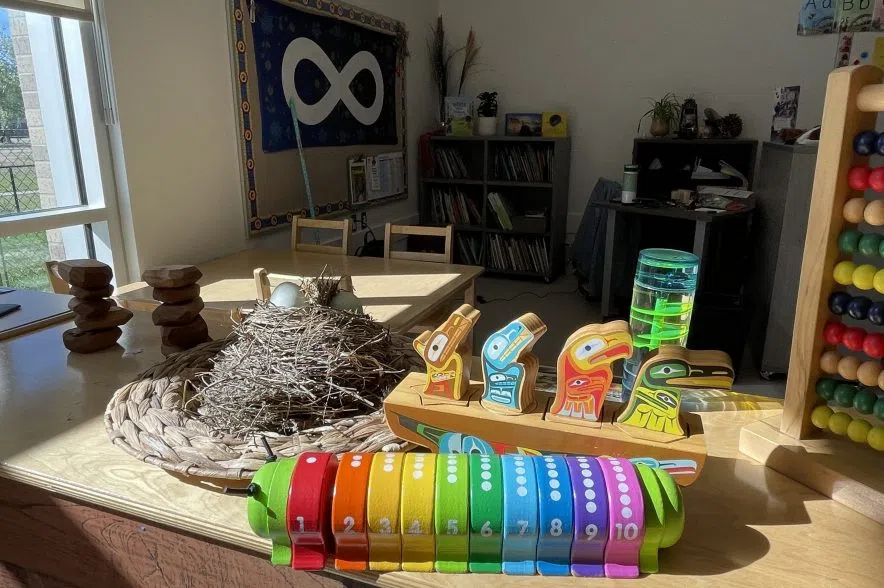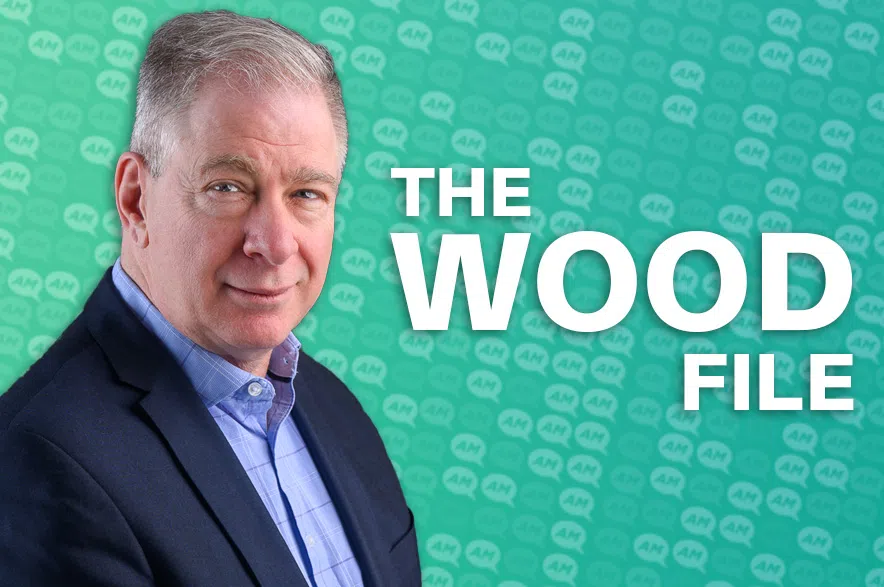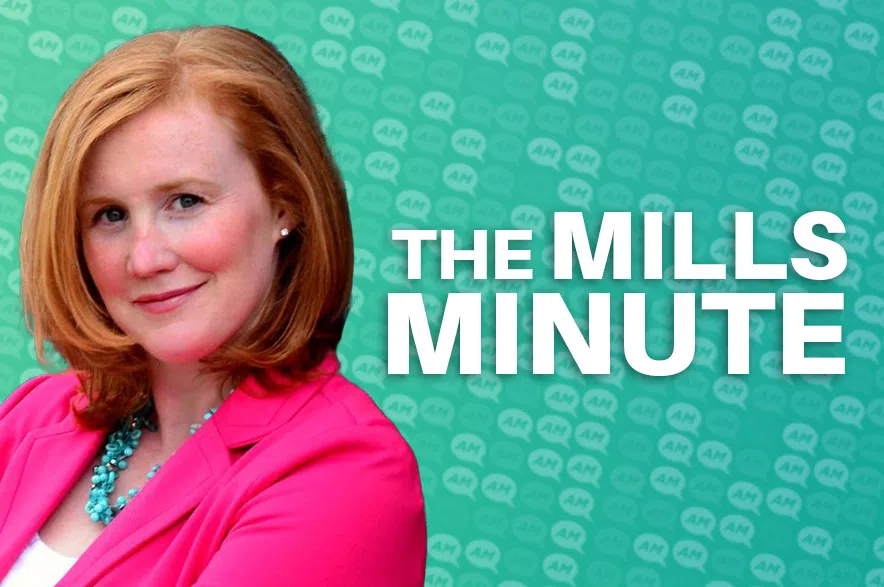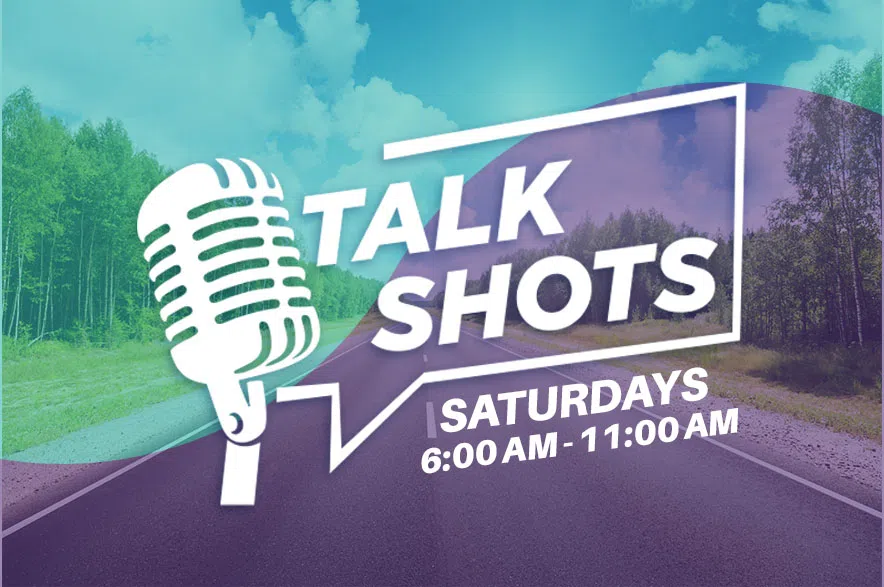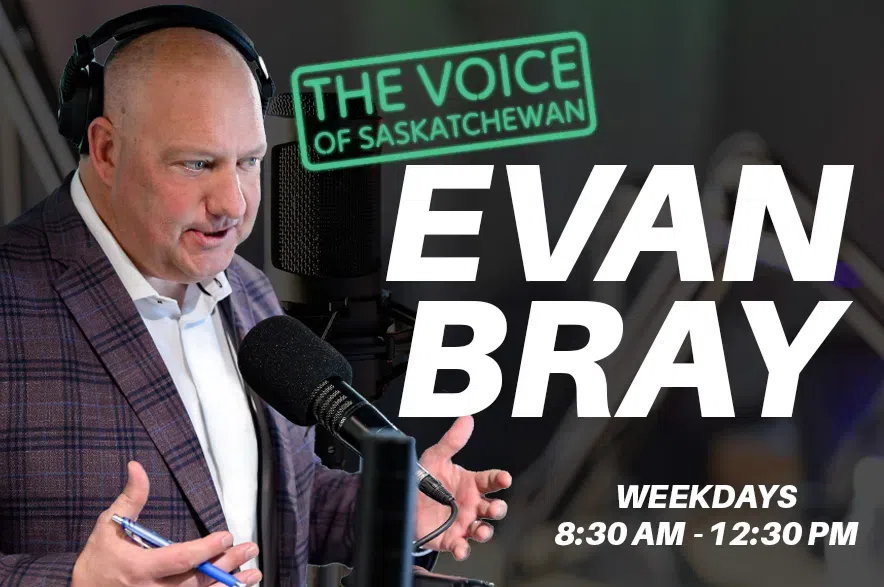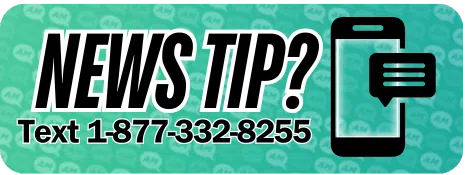Canada’s residential school history is both harrowing and heartbreaking, but it’s a history that the National Day for Truth and Reconciliation asks Canadians to face.
However, how does that work when the Canadian is a child?
Read more:
- ‘Stand with us’: Indigenous artists tapped by big companies for Orange Shirt Day
- Interpretative panels welcomed at Sask. Residential School Memorial
- Sask. govt issues apology to former students of Île-à-la-Crosse School, restitution planned
That’s one of the jobs Emily Perreault is tasked with as the Indigenous Educator at Tawâw School in Regina.
She goes to each classroom and teaches the kids about Indigenous culture and history, which — especially at this time of year — includes residential schools.
“It is hard when you walk into, like, a Grade 1 classroom, you want to get them to understand the message, but you don’t want to overwhelm them,” explained Perreault.
The conversations and lessons vary, depending on the age of the students.
She said they’ll talk about what the students have now, at Tawâw School, kids in residential school didn’t have. For Grade 1, she said they mostly focus on how they’re cared for and loved at home and at school, and how children in residential schools missed out on that.
“The older they get, then the deeper that we get. We learn about more specifics as to what they were lacking at residential school and also what the purpose of it was,” she said.
Perreault uses a number of resources — videos, songs, and books — to help explain to the children what the schools were and the impact they’ve had.
She mentioned one book called Amik Loves School, where a young boy takes his mushum (grandfather) to school to show him all the things he loves, but the mushum has a difficult time with it because of his own experience in residential school.
Sometimes, Perreault will ask the kids to draw or paint a picture of what they think the schools were like — she said that can get pretty deep.
“I’ll ask them to explain what their picture is, and they’ll tell me that it’s a girl on the girl’s side looking at the boy’s side trying to see if she can find her brother. Or it’s a kid lying on a cot missing their mom or dad,” she said.
If they’re comfortable with it, for the older grades, an elder might come in to talk about their experiences. Perreault, who’s a member of the Cowessess Band east of Regina, can share her family ties to residential schools as well.
“My dad went to Muscowequan residential school and my grandma went to Lebret, and I have heard some stories from them,” she explained.
“I don’t quite share all their details, it’s not my story to share, but it is helpful for me to share what I can, and it just helps the kids understand that, yes, this happened what feels like a long time ago, but it’s really not actually that long ago.”
She said the reactions of the students can range from disinterested to really strong.
“Depending on if we read a story or if they hear a song it can pull out emotions in them, for sure.”
When Perreault was in primary and secondary school, she said there wasn’t much taught about Indigenous culture or residential schools. And she said even when she was learning how to teach in university, there was a lack of Indigenous education.
“I was fortunate enough, though, to take classes at the FNU (First Nations University of Canada), so I got to learn a little bit about culture and the way things are done over there, which was really inspiring,” she said.
Since the announcement of potential unmarked graves that were found on the grounds of the former Kamloops Indian Residential School in B.C. in 2021, more and more conversations are happening in the public sphere about the schools.
Because of these conversations, when Perreault walks into a classroom, kids are starting out knowing more about the history, which she said can be helpful.
She said teaching this history is important, but because of her connection to residential schools, she said it’s also personal.
For those in Grades 5 and up, she said they’ll talk about the tendency to judge people we see without knowing their situation.
“When we can learn about residential schools and we learn about the effects that they have, it helps the kids to look at people and think about why that person is in the situation that they’re in, so hopefully it will stop the snap judgment,” she said.
“And also I think it helps kids understand maybe why their family members are the way that they are, or why they’re feeling out of place, or they’re not really sure who they are.”
Thinking back to the purpose of residential schools, to take away Indigenous children’s culture and language, Perreault said they kind of achieved that. She said many don’t know their culture or language — though she teaches the kids some Cree, she isn’t fluent in it yet, something she said can be hard to talk about.
“Seeing that in my own family definitely makes me want to talk about it as much as I can and help kids work through those feelings,” she said.
Support for more Indigenous education in schools needs to, and has, come from the top, according to Perreault. She said if that support is there, and it’s encouraged, then it trickles down.
She didn’t have any Indigenous teachings or education when she was in school, and said she felt very out of place.
“If we continue with Indigenous education it can help kids who have those feelings find a place where they are comfortable with themselves, and lots of us don’t grow up learning about our culture and so having it in the school really makes a big difference, it gives us an opportunity to learn things that we wouldn’t have learned growing up.”
Read more:
